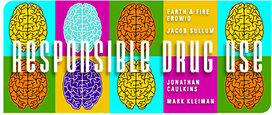I am happy to agree with the Erowids that accurate information about drugs is generally preferable, but we should be realistic about how much accurate information alone will accomplish. I’ll elaborate in a moment about some history of information-only campaigns in drug prevention, but I do not think the limitations are unique to drug use. It might be an interesting exercise to list the success stories when objective information alone was enough to have a substantial effect on population behavior. I believe that most successful public health campaigns supplement factual information with social marketing. AIDS control campaigns have sought to promote condom use as sexy. Tobacco control campaigns have shown vivid pictures of diseased lungs. More recently they have highlighted the unattractive aspects of smoking (e.g., bad breath) and publicized the tobacco companies’ manipulation of nicotine levels, in no small part because there was evidence that this had a bigger effect on teen smoking.
There was a period when drug prevention programs provided accurate, almost clinical information about drugs. This was a reaction to the failure of the earlier (circa 1960s) programs that used scare tactics. To caricature, when youth discovered that those programs had exaggerated the dangers of marijuana, some mistakenly inferred that heroin was no more dangerous than marijuana. So many prevention programs of the 1970s emphasized providing straight information about the risks of drug use. However, those programs were generally found to have no measureable effect on drug use, and by the 1980s the programs had moved on to emphasize “resistance skills,” then “social influences,” and then a “comprehensive” approach, which seemed to work better.
In retrospect the failure of information-oriented programs should not have been surprising. Most adolescents’ decisions to start using a drug are not the result of some careful calculus of benefits and costs. They are more likely to be impulsive acts, often done out of curiosity or for social reasons (e.g., to fit in with a peer group or demonstrate independence form parental norms).
There is certainly a difference between saying just “Here is the information” and saying first “This is an important decision that you should make carefully” and then offering the information. So it is probably fair to say that the Erowids’ approach has not truly been tested. Indeed, rigorous testing might be a sensible next step. A general theme of the prevention literature is that many and perhaps even most programs that appear on the face of it to be logical and well-designed turn out to have little or no measureable effect on behavior. A randomized controlled trial of the Erowids’ Principles might be very useful. (It could be conducted in another country if one thought other prevention messages would contaminate the treatment group.)
My guess is that even if the goal is to induce responsible behaviors surrounding drug use, as opposed to reductions in use, it will turn out that clever social marketing is more effective than a pure information approach. The anti-drunk driving slogan “Friends don’t let friends drive drunk” might be a good example.
As a final note, inasmuch as we all agree that accurate information is important, I think we should get the facts out in this discussion about the prevalence of illegal drug use. The Erowids note that few people abstain from all psychoactives throughout their entire life, particularly when the term is used so broadly as to include something like caffeine. That is true, but it is also true that most people have committed at least one crime, particularly when the term is used so broadly as to include getting in a dust up on the playground in grade school. However, that does not mean it is useful to think of the vast majority of people as being criminals to some degree or another. If we narrow from lifetime use of any psychoactive to current use of an illegal drug, it is clear that drug use in that sense is far from normative. The National Survey on Drug Use and Health is the best available source of information on the prevalence of drug use in the general population. According to the latest survey, only 8% of Americans 12 years old and older are current (meaning past-month) users of an illicit drug, and more than half of them used only marijuana.
The Erowids and I disagree about whether breaking the law to use a psychoactive is inherently an abrogation of the responsibilities of citizenship. That’s fine. Hopefully we can just agree to disagree. But as an empirical matter, it is obeying not breaking the prohibition against illegal drug use that is the normative behavior.

